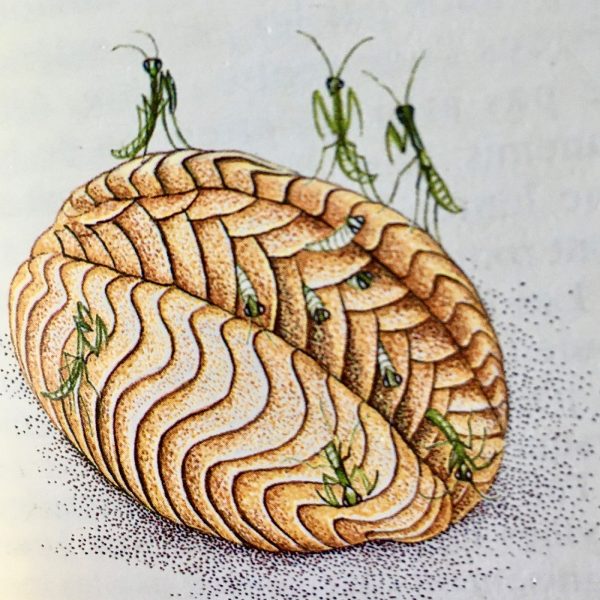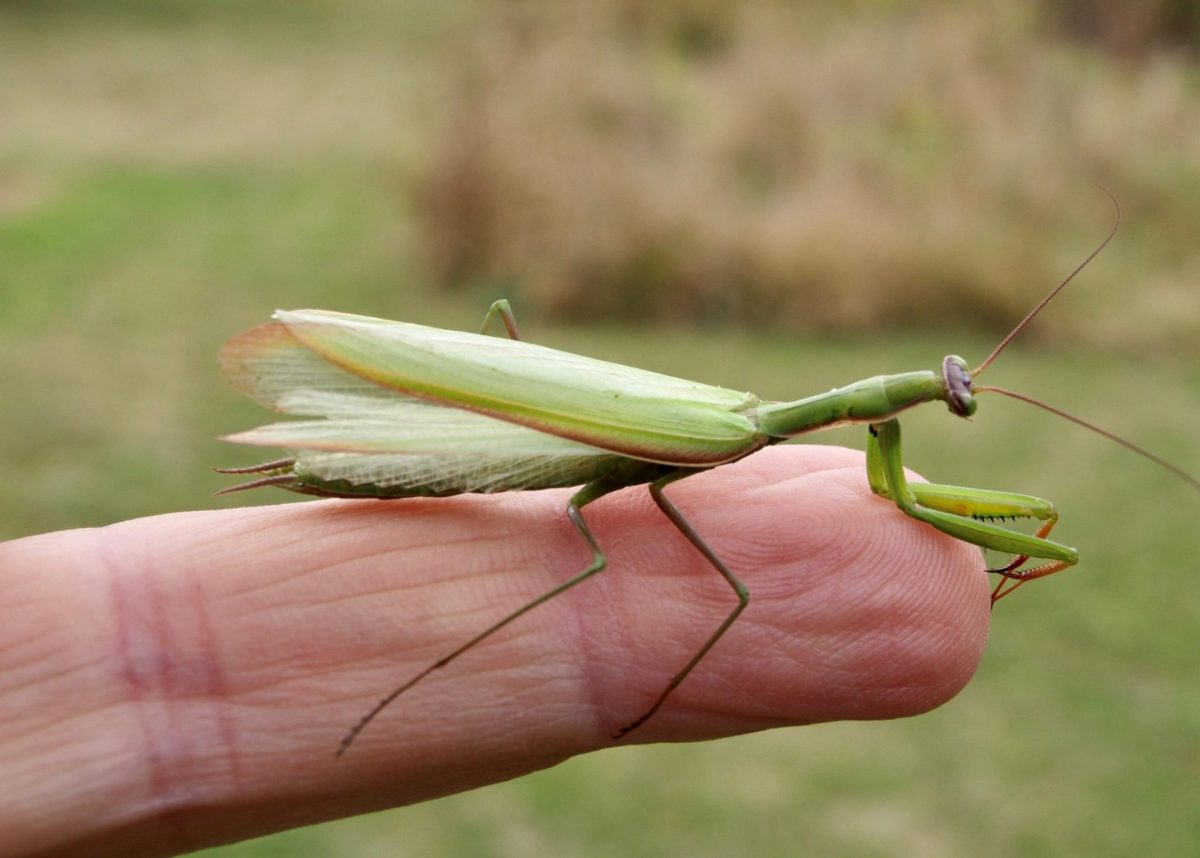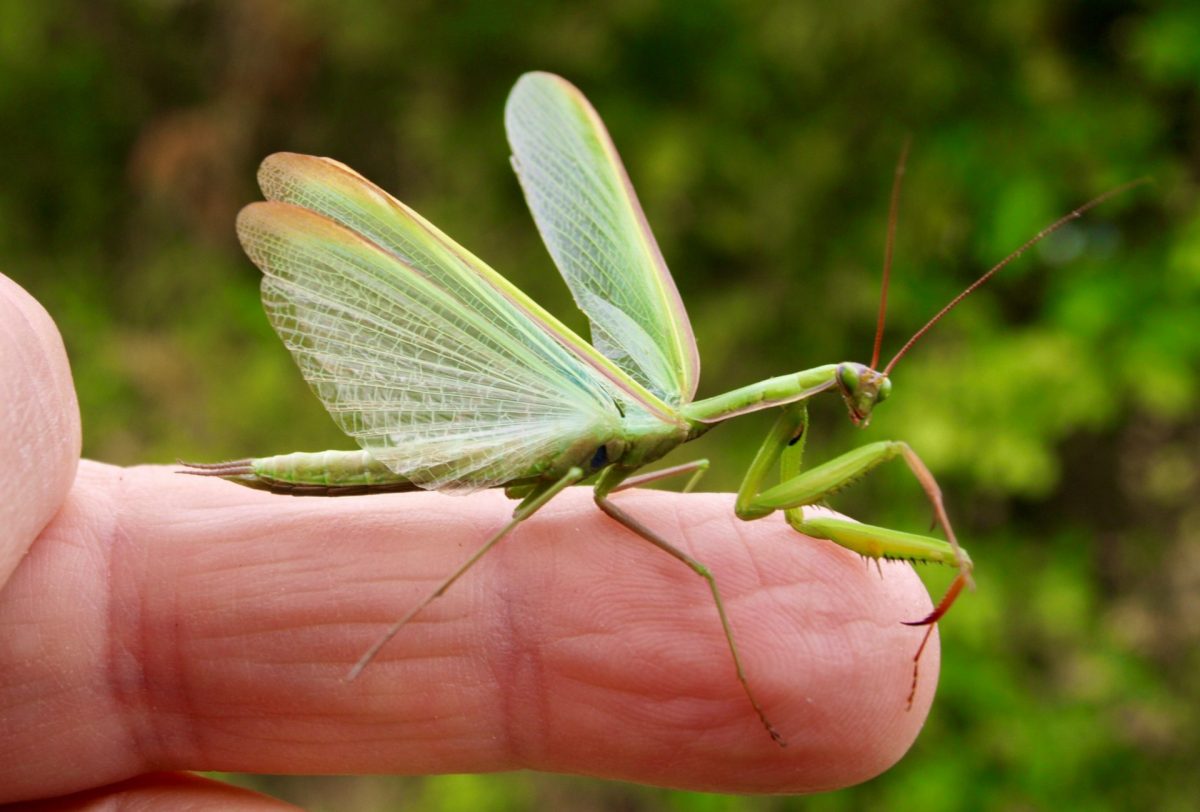(nur auf Englisch)
« Ask the animals, they will teach you » says the didactic poetry book of Job the Hebrew. Even those of the archaic world and with a sad destiny, with an enigmatic, surprising and frightening aspect, like the praying mantis (The Bible – Job 12-7/9).
Very common in the South, it is partially present in the wastelands of our region and is classified with the cockroach in the order of the dictyoptera.
Know as « Lou Prégo-Dieu » or the beast that prays to God, because of its ecstatic posture, this unusual green presence, 7 cm long, is harmless to men but far from being placid and sanctimonious.
It has a highly mobile triangular head, with small filiform antennae and protruding eyes, and it is able to turn it in all directions, which is rare in entomology.
In warm weather, it stays alert, not moving and silent, cautiously inspecting its favourite environment.
Its forelegs, known as abduction legs, sharpened with thorns and ending with a harpoon, are bent when hunting, giving it its particular style.
Always hungry, especially during the breeding season, the carnivorous mantis devours everything that comes across in the tall grass, even individuals of its own species.
It frightens them with its dreadful ghostly attitude, before killing them in a devastating way by attacking the cervical lymph nodes. With its mouth, it sparingly removes and gnaws pieces of fresh meat from them and eat on them, looking like a guest eating at a table.
The male is thinner, adapted to flight, and senses the females with its long antennae when they release their sexual pheromones in autumn.
The couple’s embrace lasts for a long time and the male have to be very precautious in order to escape a fatal issue during or after copulation.
This cannibalistic instinct of the females is justified by a perpetual need for proteins required for egg-laying, as nature favours the survival of the species before the individual.
Egg boxes, looking like 6 cm solidified meringues, made of air-beaten foam, protecting 200 eggs stored in a structured way, are carefully laid one night at the end of August, on a rock, a large dry stem or on the back of a shutter.
This fragile envelope called « athermane » protects the offspring located in its centre from the cold during winter.
The mantis had thus discovered the secrets of the Norwegian omelette long before the illustrious physicist Earl Rumford and his famous experience in 1804 with beaten egg whites.

Hatching takes place the following year in June, the juveniles quickly seeking out aphids for food and seven metamorphosis are then required for them to reach their adult size.
Therefore, we should not feel impressed by the praying mantis, as she participates in the balance of living beings by its way of life, in the order of the universe and in the invention of many scientific applications discovered thanks to biomimetics.
With the authorization of l’Est Eclair / Libération Champagne
Link: Youtube : séries Minuscules
- 1 – Popular medicine: the egg box was once used to cure frostbite. Called the « tigno » in Provence, it would be put in the pocket to relieve toothache.
- 2 – Sport: In Chinese martial arts, the praying mantis boxing is the name of different styles of animal intimidation of this insect.
- 3 – Fashion: In the 15th century, the mantis is a kind of ample coat made of ermine or velvet, often with a bonnet, which protects from the cold (as well as the mantilla, a serrated scarf worn on the head in the 18th century).
- 4 – Science: Mantis or manta-ray, an emblematic seven-metre, one-tonne animal, living in the tropical Atlantic Ocean. It is viviparous and feeds on plankton and small fish.
Headphoto: Praying mantis © Said Braim


